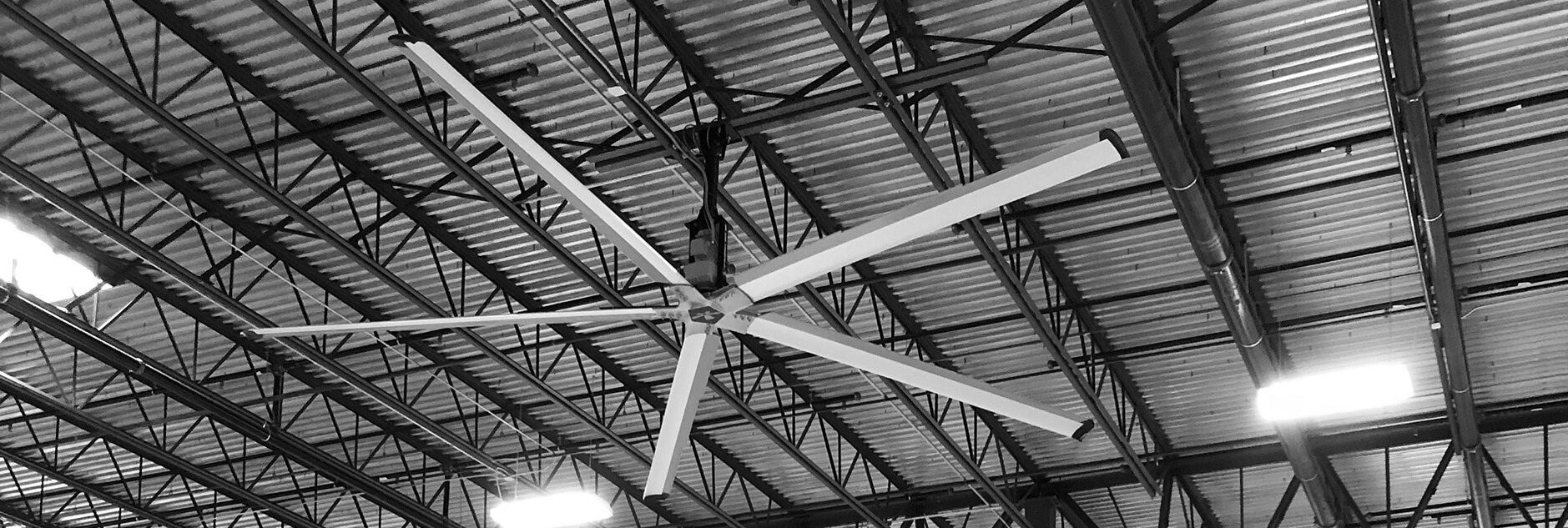How Your Ceiling Fan Works


Everyone knows what a ceiling fan is — a motor hanging from the ceiling with blades that spin and help us feel cool during summer. But how many of us actually know how ceiling fans work? There are many common misconceptions about ceiling fans and how they operate, but don’t worry — understanding ceiling fan physics isn’t as daunting as it sounds.
Physics Of A Ceiling Fan
So, how does a ceiling fan work? There are a handful of core concepts behind the science of a ceiling fan: airflow, evaporative cooling, destratification and ceiling fan mechanics.
- Airflow: While many people believe that ceiling fans add cool air to a space, this isn’t exactly true. Ceiling fans merely increase the airflow in a room. Airflow is exactly what it sounds like, a current of air that moves through a space. Ceiling fans increase the airflow of an area by pulling up air from the ground and pushing down air from the ceiling. This creates a consistent breeze, which takes us to our next topic …
- Evaporative cooling: Evaporative cooling is what makes us feel refreshed when we turn on a ceiling fan on a hot day. The current of air from a ceiling fan evaporates moisture from sweaty skin, leaving a cool sensation in its wake. But evaporative cooling doesn’t affect just people; it also prevents rooms from becoming damp, and lowers condensation.
- Destratification: As you probably already know, warm air rises and cool air sinks. This means that air, if left undisturbed, separates into distinct, stagnant layers. Ceiling fans cause destratification, which occurs when layers of air are mixed together, creating more uniform temperatures and constant airflow. Why is destratification a good thing? The flow required to blend the layers of air leads to evaporative cooling and increased comfort.
- Ceiling fan mechanics: The airflow that leads to evaporative cooling and destratification is created by the ceiling fan. Ceiling fan mechanics can be divided into two categories: blade design and speed.
How Your Ceiling Fan Works
Ceiling fan blades do more than just look pretty; they play a vital role in keeping an area cool(er). Contrary to popular belief, the number of blades on a ceiling fan does not affect the airflow of a room. A ceiling fan with three blades can be just as effective as a ceiling fan with eight. What matters is the blade size, engineering, construction and the speed at which the fan blades move.
How do fan blades work? Modern fan blades are pitched, or angled, to not only push air, but to create a downdraft so as to move air efficiently through the space. Many also operate using Bernoulli’s principle. Like an airplane wing, the blades are tapered so as to create an updraft, or “lift.” Fans engineered to run in reverse (such as our entire line of industrial fan products) are capable of drawing air downward as well. This is useful for wintertime heating applications.
Fast fans increase airflow, but also require more energy to operate. Large blades move large amounts of air and are more effective when it comes to maintaining comfortable temperatures.
VividAir HVLS Fans Save Energy and Improve Air Quality
Now that you know how ceiling fans work, let’s take a look at VividAir fans in particular. Our high-volume, low-speed (HVLS) patented Z-Tech™ ceiling fan features a pitched hub and a unique, stepped blade design that creates more thrust and air movement than other HVLS fans. This gives it up to 30% more than comparable HVLS fans on the market using Bernolli’s priciple with an airfoil design. The long blades create a steady air current while moving at low speeds. They gently boost destratification and evaporative cooling in any environment without using excessive amounts of energy. Simply put, our HVLS fans are both effective and cost efficient.
Interested in how HVLS fans can help you reduce operation cost and improve air quality in your facility? Contact us.
